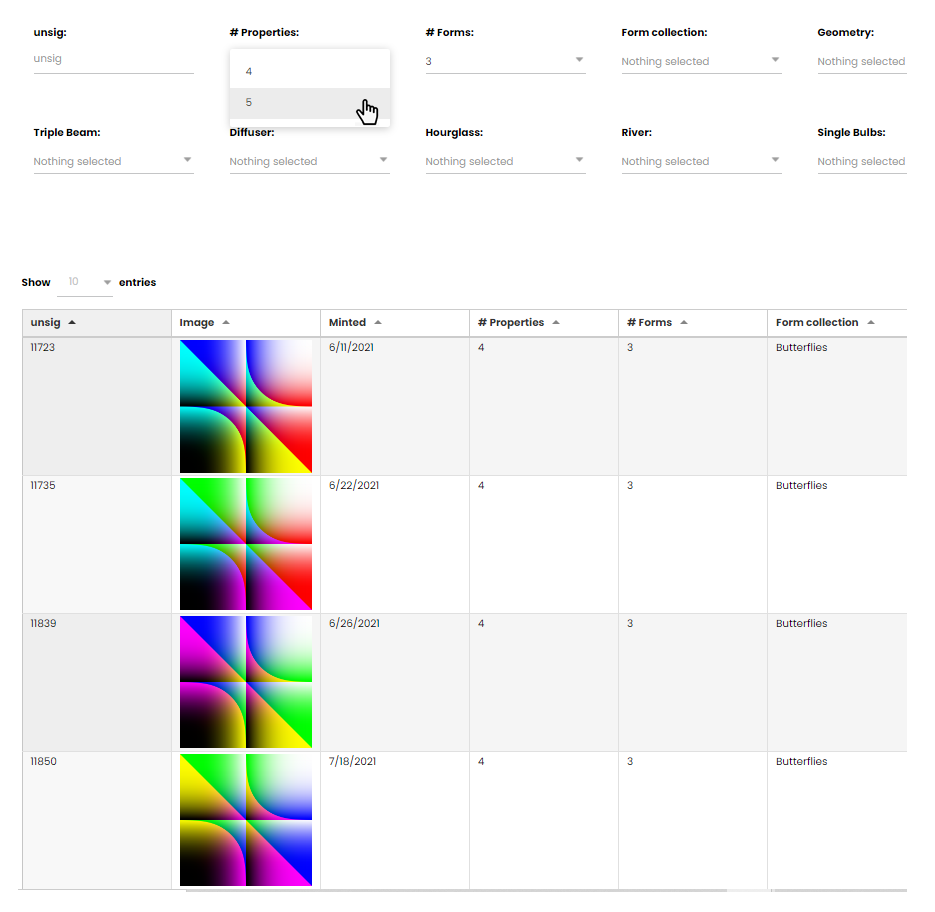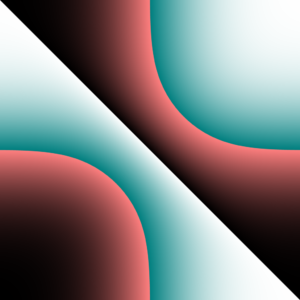unsig_analyzer
Explore the collections, properties, colors, and geometrical forms in the unsigned_algorithms collection.
Data provided by TokenLoupe.

Explore the collections, properties, colors, and geometrical forms in the unsigned_algorithms collection.
Data provided by TokenLoupe.


| unsig | Image | agg_rank | ranking_props | ranking_color | ranking_geo_count | ranking_oc_count | ranking_prop_count | Minted | # Properties | match_rank | match_right | match_left | match_top | match_bottom | # Forms | Form collection | Geometry | geometry_count | num_props_count | # OC | num_OC_count | color_collection | color_cluster | num_forms_count | Matches | Details | Single Beam | Triple Beam | Diffuser | Hourglass | River | Single Bulbs | Veins | Triple Bulbs |
|---|---|---|---|---|---|---|---|---|---|---|---|---|---|---|---|---|---|---|---|---|---|---|---|---|---|---|---|---|---|---|---|---|---|---|
| unsig | # Properties | # Forms | Form collection | Geometry | # OC | Single Beam | Triple Beam | Diffuser | Hourglass | River | Single Bulbs | Veins | Triple Bulbs |
That’s fair! If you’re completely unfamiliar with unsigned_algorithms, it can be helpful to check out the article Anatomy of An unsig first. You’ll get a better idea of what these terms mean, and then you can come back to explore how they’re all put together!
A great place to start is the Form Collections filter. Here you’ll find collections of unsigs that have been grouped together and given a name. In the results you’ll see different possibilities for properties, colors, geometries, and forms to explore further.
Shorthand for ‘number.’ These are filters that will reveal the number of properties, the number of output colors, the number of forms, and so on.
OC is Output Colors, the colors that are visible in the unsig. There can be between 1-64 OC.
There is no official ranking of the unsigned_algorithms collection as a whole. There is some ranking info on the Details page for specific characteristics, but at this time these are not rolled up into an aggregated ranking. Working on it!
This is a known issue with these filters and the large dataset. If the filters aren’t cleared in 10 seconds we recommend you refresh the page.
Interest is growing in the matchability of individual unsigs to others in the collection, so in this view you can see the total number of potential matches within the unsig collection, on one or more sides of the unsig. On the Details page there are match counts broken down by side.
For a collection created as a color study, it is remarkably difficult to narrow down color data. It’s coming though! We’ve isolated some color “clusters”, or families, and are sorting through them so they can be presented here.
It does, and the display is adaptive, but as a data-heavy presentation it will always be easier to read on a larger screen.